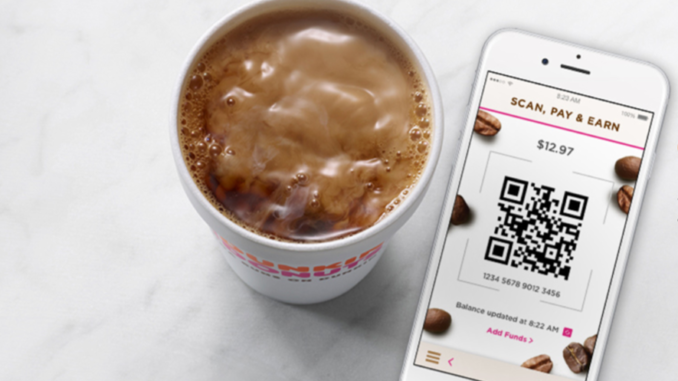
By Alisha Goldberg - 9.20.2019
These days, it seems that practically every major restaurant chain is upgrading its rewards club program and related mobile app. Recent examples include Starbucks, with almost 17.5 million active members, which earlier this year revamped its North American loyalty program and is continuously enhancing its features, while Friendly’s Restaurants last month launched its new and improved loyalty program, dubbed the BFF Club. The new BFF Club app boasts several new features, including online ordering as well as expanded functionality to obtain greater rewards.
The latest high-profile example is Dunkin’ (known as Dunkin’ Donuts from 1950 until earlier this year). With more than 12,900 restaurants in 42 countries worldwide, the company today announced the rollout of its On-The-Go Mobile Ordering app in all U.S. locations. The Dunkin’ app in 2012, the DD Perks Rewards Program was introduced in 2014 and the company then added On-the-Go Mobile Ordering in 2016. Last year, the app was redesigned and new functionality was added, including order customization options.
The mobile app was previously available exclusively to DD Perks Rewards Program members paying with an enrolled Dunkin’ gift card. The new Guest Order feature allows any customer to place an On-The-Go Mobile Order through the Dunkin’ App and pick it up by either walking in-store or going through the drive-thru.
The new On-The-Go Guest Order feature is part of a Dunkin’ App update, which also includes a new design and streamlined user experience. DD Perks members can still track and earn rewards points, view current offers, redeem for free beverages and more. Dunkin’ reportedly has more than 12 million members in its DD Perks Rewards Program.

Smaller chains are also upping their mobile app loyalty game. Last month, for example, Michigan-based Halo Burger, a 96-year old burger chain, announced the launch of “Halo Rewards,” an upgraded mobile app-enabled loyalty program that rewards guests with special offers and free food exclusively available to Halo Rewards members.
In additional to the prospect of driving increased sales and revenue, restaurant owners and operators can’t help but get excited about the value of the data collected by app-based loyalty programs. The data generally includes not only purchasing behavior data, but also psychographic and demographic data on customers on an individual basis. Restaurants can know exactly what items customers purchase and how frequently they purchase them, allowing the program to pivot between reinforcing existing purchasing habits and incentivizing loyal customers to try something new. And therein lies the real power of next-generation restaurant loyalty programs.
According to research, 82% of restaurant loyalty club members referring at least one person while spending an average of 67% more on an annual basis than other guests. The industry average of active loyalty club members for the restaurant sector ranges from 5% to 20% of total transactions. With such compelling statistics at their fingertips, it’s no wonder that so many restaurant brands, large and small, are upgrading their mobile apps.

